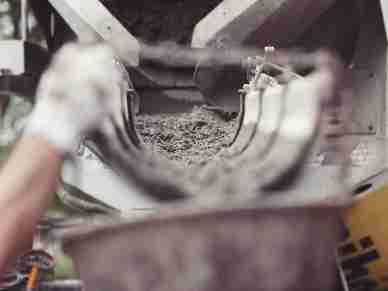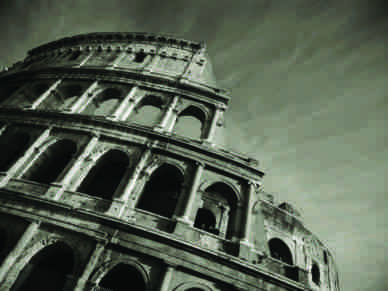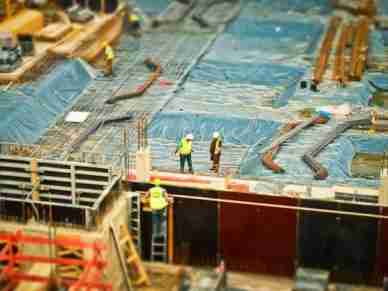Lessons from some of the world’s oldest buildings
One of the hallmarks that sets humanity apart from other life on Earth is the buildings we have raised, unmistakable signs of adapting the natural world to our needs. The built environment is all around us these days, but when humans first set to making permanent structures, it marked a significant step in our evolution as we settled into civilization. The average lifespan of a building these days is about five or six decades, but some last far longer. Calling back to a distant past, these are some of the world’s oldest buildings still standing.
Çatalhöyük
Çatalhöyük, in Turkey, is a remarkable Neolithic settlement, thriving from 7500 to 6400 BC. Houses huddle together, with access through rooftops instead of streets. Vibrant wall paintings adorn the buildings, depicting animals, humans, and enigmatic symbols. These offer glimpses into the lives and beliefs of this early community. Çatalhöyük was a center for obsidian trade, a valuable volcanic glass. Though its population estimates vary, it was a thriving center for early human society, offering a unique window into a time of transition from nomadic life to settled communities.

Newgrange
Dating to 3200 BC, Newgrange is an ancient passage tomb in Ireland. This Neolithic marvel is a massive mound topped with white quartz. Inside, a long passage leads to a chamber decorated with mysterious carvings. Its purpose remains unknown, but it likely held religious significance. Newgrange is part of a UNESCO World Heritage Site. Today, you can visit Newgrange on a guided tour, but keep an eye out – legend says the tomb is a dwelling for fairies!

Step Pyramid of Djoser
The Step Pyramid of Djoser, Egypt’s first pyramid, stands tall in the Saqqara necropolis. Built around 2700 BC, it’s a massive, six-tiered structure, a giant leap from earlier flat-topped tombs. Its architect, Imhotep, stacked these limestone layers, creating a revolutionary design. The pyramid’s heart holds Djoser’s burial chamber, while the surrounding complex boasts temples and courtyards. This architectural marvel paved the way for the smooth-sided pyramids that followed, forever changing the landscape of Egyptian tombs.
Barnenez
Jutting over Morlaix Bay in Brittany, France, Barnenez is Europe’s largest megalithic tomb. Dating to 4800 BC, it’s one of humanity’s oldest creations. This 72-meter-long giant is formed from thousands of tons of stone. Inside, 11 chambers, built with massive granite slabs, sprawl out like a maze. The builders, skilled engineers, even incorporated impressive corbelled roofs in some chambers. Aligned with the winter solstice sunrise, Barnenez hints at the astronomical knowledge of these Neolithic people. Today, this remarkable monument stands as a testament to their ingenuity and a window into their beliefs about death and the afterlife.
Mohenjo-daro
Mohenjo-daro, meaning “Mound of the Dead” in Sindhi, is a sprawling archaeological site in Pakistan. Built around 2500 BC, it flourished as a major city of the Indus Valley Civilization, rivaling ancient Egypt and Mesopotamia. Unearthed brick buildings hint at advanced urban planning, with a sophisticated drainage system keeping the city – and its residents, as public baths were discovered – clean. Baked clay seals featuring unknown symbols suggest a writing system. Abandoned around 1900 BCE, Mohenjo-daro offers a glimpse into a complex, well-organized society that thrived millennia ago.
Palace of Knossos
The palace on Crete is a labyrinthine wonder from the Minoan civilization, dating to 1900 BC. Europe’s largest Bronze Age palace, it once bustled with life. Vibrant frescoes adorned its walls, depicting leaping bulls and Minoan gods. Workshops hummed with industry, while storerooms overflowed with treasures. Knossos’ function went beyond a royal residence; it was a political and economic center. Though partially reconstructed, the palace’s mysterious layout, with its winding corridors and central court, continues to spark imaginations, forever linked to legends of the Minotaur.

Stonehenge
Stonehenge, on England’s Salisbury Plain, is a prehistoric enigma. Erected in stages between 3000 and 1500 BC, it’s a ring of massive sarsen stones, topped with connecting lintels. These giants, some weighing 25 tons, were transported up to 150 miles. The smaller bluestones, brought from even farther away, add another layer of mystery. Stonehenge’s purpose remains debated. Theories range from a religious site for astronomical alignments to a ceremonial center for feasting and burials. Its enduring legacy lies in its scale, precision, and the unanswered questions it poses, making it a powerful symbol of a bygone era.

Tomb of Cyrus the Great
The Tomb of Cyrus the Great, in Iran, is a simple yet powerful monument. Built around 530 BC, it’s believed to hold the remains of Cyrus, founder of the vast Achaemenid Empire. Constructed from white limestone, it rises from a stepped platform. Unlike other royal tombs of the era, it lacks grand decorations. An inscription in Akkadian, offers a humble plea: “Do not grudge me this dwelling, I who am Cyrus, king of a great empire, king of Persia, king of Anshan.” This unassuming tomb, standing for over 2500 years, stands as a testament to Cyrus’ legacy and his belief in simplicity.
Knap of Howar
Nestled on Papa Westray in Scotland, the Knap of Howar boasts the title of potentially the oldest preserved stone house in northern Europe. Dating back to 3700 BC, it predates similar structures at Skara Brae. Two thick-walled, rectangular buildings huddle together, facing the sea. Low doorways lead inside, where hearths and stone cupboards hint at daily life. Built on an ancient midden (garbage dump), these well-preserved houses offer a glimpse into Neolithic farming life. No windows exist, so firelight likely illuminated the spaces, with smoke escaping through a roof hole.
The Parthenon
The Parthenon, perched on Athens’ Acropolis, is a former temple dedicated to Athena, the Greek goddess of wisdom and war. Built in the fifth century BC, it’s a masterpiece of Doric architecture, famed for its harmonious proportions and lifelike sculptures. These once vibrantly colored friezes depicted scenes from Greek mythology and Athenian victories. The Parthenon’s legacy goes beyond its beauty; it’s a symbol of ancient Greece’s democracy and cultural achievements. Today, it stands partially ruined, a testament to both the power of creation and the passage of time.
















Leave a Reply